除了 culture 之外,文化按语境可以有不同翻译,比如:
1. (精神财富) civilization; culture
中国文化是世界上最古老的文化之一。 The Chinese civilization is one of the oldest in the world.
2. (知识,传统) culture; custom; tradition:
适应当地文化 adapt to local custom and tradition
介绍中国文化的英语作文
Traditional Chinese culture is beginning to capture the attention of the world. This is true even as popular culture that has traditionally been considered Western begins to spread throughout China. Kung Fu, especially, has had a great impact on the millions of people who first learned about China through it. From that, they may come to China and learn about other aspects of this culture, such as traditional operas like the Beijing and Sichuan ones. Asian nations have long known about the greatness of ancient Chinese culture. Their own cultures are a mix of native ones and those Chinese characteristics. Korea and Japan long ago adopted ideas such as Confucianism is something that continues today even as it is challenged by Pop Culture. This strength comes from the ideas given in the Four Books of Confucianism (The Great Learning, The Doctrine of the Mean, The Analects of Confucius, and The Book of Mencius). These books built upon the ideas of an even more ancient period codified in the Five Classics. From them, the West learns such things as Fengshui and other concepts that are uniquely Chinese. China has taken steps to further this spread of its culture by establishing Chinese Cultural Centers in such places as the United States and Europe.中国传统文化正在吸引全世界的注意,尽管在传统意义上被看成是西方文化的流行文化开始在中国广泛传播。
尤其是中国功夫,对于那些通过功夫初次了解中国的成千上万的人来讲,有着非常大的影响。
由于功夫,他们可能来到中国,学习了解中国文化的其他方面,比如京剧和川剧这样的传统戏剧。
亚洲国家很早以前就知道古代中国文化的博大。
他们自己的文化混合了本民族的文化和中国文化的特色。
韩国和日本很早就把儒教等观念引进了他们的社会当中。
甚至在被流行文化冲击的今天,儒教的影响也一直在延续。
这种力量来自“四书”(《大学》、《中庸》、《论语》和《孟子》)中的思想。
这些书是依照“五经”之中所体现的更为早期的思想而著成的。
西方人从中了解到了诸如风水等中国所特有的文化概念。
中国已经通过向其他国家派遣文化使者并在美国、欧洲等地建立中国文化中心来进一步推广中国文化。

关于中国文化的英语作文
The Spring Festival Far and away the most important holiday in China is Spring Festival, also known as the Chinese New Year. To the Chinese people it is as important as Christmas to people in the West. The dates for this annual celebration are determined by the lunar calendar rather than the Gregorian calendar, so the timing of the holiday varies from late January to early February. To the ordinary Chinese, the festival actually begins on the eve of the lunar New Year's Day and ends on the fifth day of the first month of the lunar calendar. But the 15th of the first month, which normally is called the Lantern Festival, means the official end of the Spring Festival in many parts of the country. 2 Spring Festival is the most importantand popular festival in China.Before Spring Festival ,the people usually clean and decorate their houses.And they go to the Flower Fairs to buy some flowers.During Spring Festival ,the adults usually give lucky money to children.People often get together and have a big meal.Some people eat dumpling for dinner.春节的作文
关于中国传统文化的英语作文
这些东西都可以再网上查到!关于长城的传说 In the north of China, there lies a 6,700-kilometer-long (4,161-mile-long) ancient wall. Now well-known as the Great Wall of China, it starts at the Jiayuguan Pass of Gansu Province in the west and ends at the Shanhaiguan Pass of Hebei Province in the east. As one of the Eight Wonders in the world, the Great Wall of China has become the symbol of the Chinese nation and its culture. Lots of beautiful legends and stories about the Great Wall took place following along the construction, and since that time these stories have spread around the country. Those that happened during construction are abundant, such as Meng Jiangnu's story and the legend of the Jiayuguan Pass. Meng Jiangnu's story is the most famous and widely spread of all the legends about the Great Wall. The story happened during the Qin Dynasty (221BC-206BC). It tells of how Meng Jiangnu's bitter weeping made a section of the Great Wall collapse. Meng Jiangnu's husband Fan Qiliang was caught by federal officials and sent to build the Great Wall. Meng Jiangnu heard nothing from him after his departure, so she set out to look for him. Unfortunately, by the time she reached the great wall, she discovered that her husband had already died. Hearing the bad news, she cried her heart out. Her howl caused the collapse of a part of the Great Wall. This story indicates that the Great Wall is the production of tens of thousands of Chinese commoners. Another legend about the Jiayuguan Pass tells of a workman named Yi Kaizhan in the Ming Dynasty (1368BC-1644BC) who was proficient in arithmetic. He calculated that it would need 99,999 bricks to build the Jiayuguan Pass. The supervisor did not believe him and said if they miscalculated by even one brick, then all the workmen would be punished to do hard work for three years. After the completion of the project, one brick was left behind the Xiwong city gate. The supervisor was happy at the sight of the brick and ready to punish them. However Yi Kaizhan said with deliberation that the brick was put there by a supernatural being to fix the wall. A tiny move would cause the collapse of the wall. Therefore the brick was kept there and never moved. It can still be found there today on the tower of the Jiayuguan Pass. In addition to the above-mentioned stories about the construction of the Great Wall, there are also plenty of stories about current scenic spots. A famous one is the legend of the Beacon Tower. This story happened during the Western Zhou Dynasty (11th century BC-711 BC). King You had a queen named Bao Si, who was very pretty. King You liked her very much, however Bao Si never smiled. An official gave a suggestion that setting the beacon tower on fire would frighten the King's subjects, and might make the queen smile. King You liked the idea. The subjects were fooled and Bao Si smiled at the sight of the chaos. Later enemies invaded Western Zhou, King You set the beacon tower on fire to ask for help. No subjects came to help because they had been fooled once before. Thus, King Zhou was killed by the enemy and Western Zhou came to an end. Beautiful stories and legends about the Great Wall help to keep alive Chinese history and culture. In each dynasty after the building of the Great Wall, many more stories were created and spread. 历史 No one can tell precisely when the building of the Great Wall was started but it is popularly believed that it originated as a military fortification against intrusion by tribes on the borders during the earlier Zhou Dynasty. Late in the Spring and Autumn Period (770 BC - 476 BC), the ducal states extended the defence work and built "great" structures to prevent the attacks from other states. It was not until the Qin Dynasty that the separate walls, constructed by the states of Qin, Yan and Zhao kingdoms, were connected to form a defensive system on the northern border of the country by Emperor Qin Shi Huang (also called Qin Shi Huangdi by westerners or the First Emperor). After the emperor unified the country in 214 BC, he ordered the construction of the wall. It took about ten years to finish and the wall stretched from Linzhao (in the eastern part of today's Gansu Province) in the west to Liaodong (in today's Jilin Province) in the east. The wall not only served as a defence in the north but also symbolized the power of the emperor. From the Qin Dynasty onwards, Xiongnu, an ancient tribe that lived in North China, frequently harassed the northern border of the country. During the Han Dynasty, Emperor Wu (Han Wu Di), sent three expeditions to fight against the ...
关于中国文化的英语文章?
这是一篇关于造纸的文章:A long time ago, the text is engraved on the bones, or written on bamboo, silk,These materials have very heavy, some are very expensive, and cause a lot of inconvenience to the people.In the period of the Western Han Dynasty two thousand years ago, some people began to use some of the more expensive plantThe fabric of paper, the paper looks very rough, writing is still very convenient. ToThe Eastern Han Dynasty, there was a eunuch named Cai Lun decided to look for a paper practical for peopleMethod.Cai Lun often went to the river, to observe the women wash silk and silk "floating floc" process.He found the rest of the silk after breaking away out of silk,Will form a thin layer on the tableThings。
Some people put it to dry in the sun, to paste the windows, package, or is used to write.He to the paper mill,To consult the paper craftsmen,Gradually understand and master the buildThe basic process of paper.In order to create an economic and practical paper,Cai Lun used the bark,Bark,Rags, scrap fishing nets and other common materials, broken them, made of paper pulp.Every month Cai Lun test, test, get all the dirty, the people aroundThey regard him as an eccentric, not willing to approach him. But he didn't care about those strange eyes, according toA new method of his paper in the old.He used the "method of floating floc", with the mat for the pulp, the pulp outWill form a thin layer of the mat, dried it was paper.Cai Lun succeeded. He made the low price, easy to carry and the writing of the paper, theA great invention was listed as one of the four great inventions of ancient china.
寻一篇关于“文化交流”的英语作文范文。
The key to effective cross-cultural communication is knowledge. First, it is essential that people understand the potential problems of cross-cultural communication, and make a conscious effort to overcome these problems. Second, it is important to assume that one's efforts will not always be successful, and adjust one's behavior appropriately.For example, one should always assume that there is a significant possibility that cultural differences are causing communication problems, and be willing to be patient and forgiving, rather than hostile and aggressive, if problems develop. One should respond slowly and carefully in cross-cultural exchanges, not jumping to the conclusion that you know what is being thought and said. William Ury's suggestion for heated conflicts is to stop, listen, and think, or as he puts it "go to the balcony" when the situation gets tense. By this he means withdraw from the situation, step back, and reflect on what is going on before you act. This helps in cross cultural communication as well. When things seem to be going badly, stop or slow down and think. What could be going on here? Is it possible I misinterpreted what they said, or they misinterpreted me? Often misinterpretation is the source of the problem.Active listening can sometimes be used to check this out–by repeating what one thinks he or she heard, one can confirm that one understands the communication accurately. If words are used differently between languages or cultural groups, however, even active listening can overlook misunderstandings. Often intermediaries who are familiar with both cultures can be helpful in cross-cultural communication situations. They can translate both the substance and the manner of what is said. For instance, they can tone down strong statements that would be considered appropriate in one culture but not in another, before they are given to people from a culture that does not talk together in such a strong way. They can also adjust the timing of what is said and done. Some cultures move quickly to the point; others talk about other things long enough to establish rapport or a relationship with the other person. If discussion on the primary topic begins too soon, the group that needs a "warm up" first will feel uncomfortable. A mediator or intermediary who understands this can explain the problem, and make appropriate procedural adjustments.Yet sometimes intermediaries can make communication even more difficult. If a mediator is the same culture or nationality as one of the disputants, but not the other, this gives the appearance of bias, even when none exists. Even when bias is not intended, it is common for mediators to be more supportive or more understanding of the person who is of his or her own culture, simply because they understand them better. Yet when the mediator is of a third cultural group, the potential for cross-cultural misunderstandings increases further. In this case engaging in extra discussions about the process and the manner of carrying out the discussions is appropriate, as is extra time for confirming and re-confirming understandings at every step in the dialogue or negotiating process.
中国传统文化的英语作文
Culture of China The Culture of China is home to one of the world's oldest and most complex civilizations. China boasts a history rich in over 5,000 years of artistic, philosophical, political, and scientific advancement. Though regional differences provide a sense of diversity, commonalities in language and religion connect a culture distinguished by such significant contributions such as Confucianism and Taoism. Confucianism was the official philosophy throughout most of Imperial China's history and strongly influenced other countries in East Asia. Mastery of Confucian texts provided the primary criterion for entry into the imperial bureaucracy.With the rise of Western economic and military power beginning in the mid-19th century, Western systems of social and political organization gained adherents in China. Some of these would-be reformers rejected China's cultural legacy, while others sought to combine the strengths of Chinese and Western cultures.China is a unified nation consisting of many different ethnic groups. Fifty-six different ethnic groups make up the great Chinese national family. Because the Han people accounts for more than ninety percent of China's population, the remaining fifty-five groups are generally referred to as "ethnic minorities." Next to the majority Han, the Mongolian, Hui, Tibetan, and Uygur peoples comprise the largest ethnic groups. Although China's ethnic minorities do not account for a large portion of the population, they are distributed over a vast area, residing in every corner of China.Particularly since the implementation of China's opening and reform policy, the central government has increased investment in minority areas and accelerated their opening to the outside world. This has resulted in an upsurge of economic development in these areas. Each of China's ethnic minority groups possesses a distinctive culture. The Chinese government respects minority customs, and works to preserve, study, and collate the cultural artifacts of China's ethnic minority groups. The government vigorously supports the development of minority culture and the training of minority cultural workers, and fosters the development of traditional minority medicine.The relation among China's ethnic groups can be described as "overall integration, local concentration, mutual interaction." Concentrations of ethnic minorities reside within predominantly Han areas, and the Han people also reside in minority areas, indicating that there has been extensive exchanges among China's ethnic groups since ancient times. With the development of the market economy, interaction among ethnic groups has become even more active in the areas of government, economics, culture, daily life, and marriage. Linked by interdependence, mutual assistance, and joint development, their common goals and interests creating a deep sense of solidarity, China's ethnic groups resemble a great national family, together building Chinese civilization.
有介绍中国新年文化的英语文章吗?
Chinese New YearChinese New Year, known in Chinese as the Spring Festival or the Lunar New Year, is the most important of the traditional Chinese holidays. The festival proper begins on the first day of the first lunar month in the Chinese calendar and ends on the 15th, on the Lantern Festival. Chinese New Year's Eve is known as Chu Xi. Chu literally means "change" and xi means "eve".Celebrated internationally in areas with large populations of ethnic Chinese, Chinese New Year is considered a major holiday for Chinese as well as for ethnic groups who were strongly influenced by Chinese culture. This includes Japanese, Koreans, Miao (Chinese Hmong), Mongolians, Vietnamese, Tibetans, the Nepalese and the Bhutanese (see Losar). Chinese New Year is also the time of the the largest human migration, when overseas Chinese all around the world travel home to have reunion dinners with their families on Chinese New Year's eve.●New Year datesThe Chinese New Year dates are determined by the lunisolar Chinese calendar, which is also used in countries that have adopted or have been influenced by Han culuture, notably the Koreans, the Japanese, the Tibetans, the Vietnamese and the pagan Bulgars. Chinese New Year starts on the first day of the new year containing a new moon (some sources include New Year's Eve) and ends on the Lantern Festival fourteen days later. This occurs around the time of the full moon as each lunation is about 29.53 days in duration. In the Gregorian calendar, the Chinese New Year falls on different dates each year, on a date between January 21 and February 20. In traditional Chinese Culture, Lichun is a solar term marking the start of spring, which usually falls on either February 4 or 5.The dates for the Spring Festival from 1996 to 2019 (in the Gregorian calendar) are listed below, along with the year's presiding animal zodiac and its earthly branch. The names of the earthly branches have no English counterparts and are not the Chinese translations of the animals.Many non-Chinese confuse their Chinese birth-year with their Gregorian birth-year. As the Chinese New Year starts in late January to mid February, the Chinese year dates from 1 January until that day in the new Gregorian year remain unchanged from the previous Gregorian year. For example, the 1989 year of the snake began on 6 February 1989. The year 1990 is considered by some people to be the year of the horse. However, the 1989 year of the snake officially ended on 26 January 1990. This means that anyone born from January 1 to 25 January 1990 was actually born in the year of the snake rather than the year of the horse. Many online Chinese Sign calculators do not account for the non-alignment of the two calendars, incorrectly using Gregorian-calendar years rather than official Chinese New Year dates. See Chinese astrology for a list of Chinese New Year dates for every year from 1900 to 2020, covering one full sexagesimal cycle (1924–1983) and portions of two others.●HistoryIt is unclear when the beginning of the year was celebrated before the Qin Dynasty. It is possible that the beginning of the year began with month 1 during the Xia Dynasty, month 12 during the Shang Dynasty, and month 11 during the Zhou Dynasty in China. We know that intercalary months, used to keep the lunar calendar synchronized with the sun, were added after month 12 during both the Shang Dynasty (according to surviving oracle bones) and the Zhou Dynasty (according to Sima Qian). The first Emperor of China Qin Shi Huang changed the beginning of the year to month 10 in 221 BC. Whether the New Year was celebrated at the beginning of month 10, of month 1, or both is unknown. In 104 BC, Emperor Wu of the Han Dynasty established month 1 as the beginning of the year, where it remains.●MythsAccording to legend, in ancient China, the ni??n (?1′), a man-eating beast from the mountains, could silently infiltrate houses to prey on humans. The people later learned that the nian was sensitive to loud noises and the color red, so they scared it away with explosions, fireworks and the liberal use of the color red. These customs led to the first New Year celebrations. Gu?2 ni??n , which means to celebrate the new year, literally means the passing of the nian beast. ●Public HolidayChinese New Year is observed as a public holiday in a number of countries and territories where a sizeable Chinese population resides. Since Chinese New Year falls on different dates on the Gregorian calendar every year on different days of the week, some of these governments...
有没有有关英语文化的英语文章
文化差异(Culture Difference):种族 National race The whole question of the changing role of Blacks in American society as been the subject of newspaper articles around the world so frequently that visitors to the United States do not know what to expect when they arrive. They may be surprised when they see that Blacks and Whites work side by side in offices , factories , and schools across the country . The majority of Blacks in the United States, however, live in and around only a small number of American cities. Many dark-skinned visitors arrive in the United States fearing personal attack or expecting various degrees of racial prejudice. Some forms of discrimination [1] still exist ,unfortunately, especially in the areas of the housing , schools , and jobs . The school equality is still more a dream than a reality. There are still too many areas of the country where Black Americans do not enjoy the same full opportunities as White Americans . However, the vast majority of American s are working , studying , and sharing public places together. This was not true even a few years ago in some parts of the country , but progress is steadily being made . You will be able to observe the improvement in race relations as soon as your plane lands . You will see it in the airport, in public buses and trains , in theaters , restaurants , rest room, in sops and libraries , in offices and factories . Close personal friendships between Blacks and Whites , full trust and social relationships are still not common , except in certain areas, However, even in this - the slowest area of progress-there has been change , especially among young people. [1] discrimination n. 辨别, 区别, 识别力, 辨别力, 歧视 Excerpted from " A Guide to U.S.A. ", edited by Li Yang, Li Yi, published by Foreign Language Teaching and Research Press. Culture Difference 发表日期:2005-04-22 10:58:52 作者:洪恩在线 It is not a novel knowledge that culture difference exists between eastern and w estern countries. But not until I heard the lecture given by a Chinese scholar, who has been lived in Australia for several years, did I came to understand that how different it is. The scholar summarized that we, as Chinese, prefer to think in a spiral, casual way, while western people, more often than not, are fond of a linear, business-i s-business way. Supporting the idea, he named out examples he himself experience d while staying in Australia. Here are some excerpts. Firstly, line up matter. If you are in China, it is not rare to see that a crowd of people throng in the supermarket, trying to get service first. People in Ch ina do line up, the scholar said in a humorous tone, but they prefer to line up at a horizontal way. In contrast, in western countries, say, in Australia, people always line up, no matter in a big bank or a small grocery store. And they take it for granted. Lin ing up has long since become part of their life that they scarcely doubt it or g row impatient while doing it. Secondly, first come, first served. Though in words it is a normal principle her e in China, it's mostly not the case in reality. Take an example of what usuall y happens in a bank. Here when we are in a middle-sized bank, and suppose we are talking with the cashier, it always tends to have someone butt in, claiming tha t his or her request takes only one second. And it seems that we have already been accustomed to it. So has the cashier. But in western countries, it never applies. It is always rude that you butt in whil e the cashier is serving his customer. No matter how little time your request co sts, the cashier, more often than not, is likely to turn you down. Only one cust omer at a time is his principle. Thirdly, change stuff. Suppose I am in a shopping mall and the stuff I purchase cost me 142 RMB. While lining up at the casher's and happening to check my wall et, I find I have 200 RMB and two one-yuan coins. What will I do? To give the ca shier 200 RMB, or give him 200 RMB and the two one-yuan coins so that he could r eturn me 60 RMB, which is more convenient for both of us. I think when the Chinese were in this situation, they would mostly choose the la tter one. But the scholar said, in Australia, they won't do so. He then told th at he himself did try it once, and he thought it was self-evident to do so. But the cashier did not understand. So the scholar latter on summarized that western people are prone to lack of fle xibility while doing their work. Then how about us in their eyes? They think we Chinese have a tendency to make things complicate. What an interesting contrast! Here I don't intend to tell which is better and which is worse. What I try to s ay is just that we ...
一份介绍中英文化差异的英文文章?急需!
Social responsibility The British generally have a sense of social responsibility. Some people reached a very high "Lei Feng" realm. There is only one China "Lei Feng", but I have to say that Britain's "Lei Feng" absolutely more than one, but also more than 10. This sense of social responsibility is manifested in many forms, some of us in the eyes of Chinese people a little bit difficult to understand. My landlord did not fly the Green Party is to her beliefs. Last year, the Lebanese war, 100,000 British people sacrifice rest time Saturdays to London demonstrations are peaceful. There are a few people intruded into the Scottish RAF base to see if a stop in Israel Yun bomb American aircraft, and so on. But best embodies a sense of social responsibility is a British non-governmental organizations and volunteers. In 2005 the United Kingdom the number of volunteers for 20400000, at least once a month to participate in voluntary action. Control Britain 60 million the total population, it should be said that this figure is impressive. The British Ministry of the Interior estimates, the annual contribution made by volunteers the economic value of over 25 billion pounds. Britain has a large number of charitable organizations (charities), or in the traditional sense of the existence of the charity as the main purpose of the nonprofit organization. Britain in the Middle Ages on a church set up a charitable cause, 400 years ago the world's first charitable cause of a specialized legal norms. So charitable organizations in the United Kingdom has a long history, and there is broad, mature enormous impact. Tolerance British society is very tolerant with a long characteristics. Here are many reasons, religious, historical, demographic composition and so on are all reasons. Tolerance is the basic content of the first maximum tolerance of different views, allowing all kinds of views published exchanges. Tolerance is a necessary condition for democracy. As a famous statement said: I do not agree with your point of view, but the expression of the death to defend your rights. Tolerance also means that we should respect other ethnic groups of people, other cultures. Finally, the United Kingdom also represents tolerance asylum, which is accepted in other parts of persecution of people ran to the refugees and so forth here. The Ministry of the Interior has specialized institutions dealing with these issues, there are specialized court related case. We all know that the fact is: in Victoria era, Marx lived in London for a long time (the Prussian authorities and the Belgian government expelled), the use of the British Museum's library collection, in his theoretical research, writing "Das Kapital" and and Engels together in 1848 in London issued the "Manifesto of the Communist Party." It is entirely possible that no British tolerance, not Marxism. Creativity Britain has a strong culture of the creative factor, or the atmosphere of the community as a whole is to encourage innovation, and appreciate the various means of differentiating itself (here also tolerant factors play a role). Weeks said that China is to encourage innovation, but we should recognize the contrast from the relatively conservative society as a whole, people who lack the means of differentiating itself understanding, encouragement and protection. From a historical point of view, the creation of the British invented or created by the British is a lot of scientific theories, such as Newton and Darwin's theory. There are many innovations and inventions in our everyday life. Casually can cite examples are: A modern sense, the postal system; frames; modern sense, the railway mode of transport; Metro: First lines connecting the northern region is London Paddington to Farringdon line, in 1863 opened; MRI, or magnetic resonance imaging technology, and so on. However, we recognized the greatest invention is the parliamentary system, the entire western England is the birthplace of parliamentary democracy. This topic is very large, say a few individual needs. Democracy and the rule of law This referred to the British tradition and system, we must look back at history. History is very complicated, but we can select several of the most important scenes, or they may be called debris: "Great Charter", John Locke, Thomas POON and Robert Owen. British history is the most important document "Magna Carta", the English called Grand Charter, which is the original Latin, called Magna Carta. The basic background is in the June 10, 1215, England's aristocracy who because of dissatisfaction with the autocratic King to unite, the threat of force, in consultation with the ...
转载请注明出处作文大全网 » (文化)用英语怎么说?

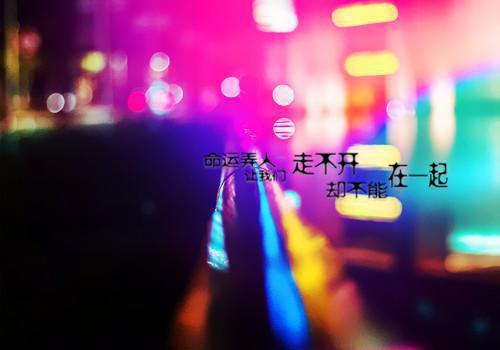
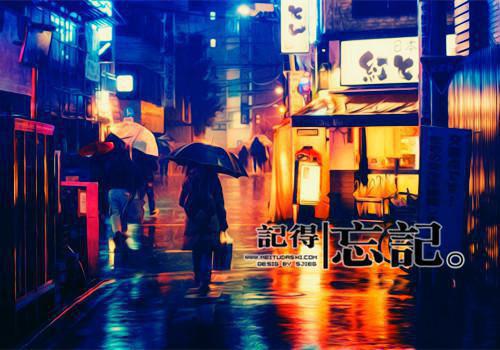

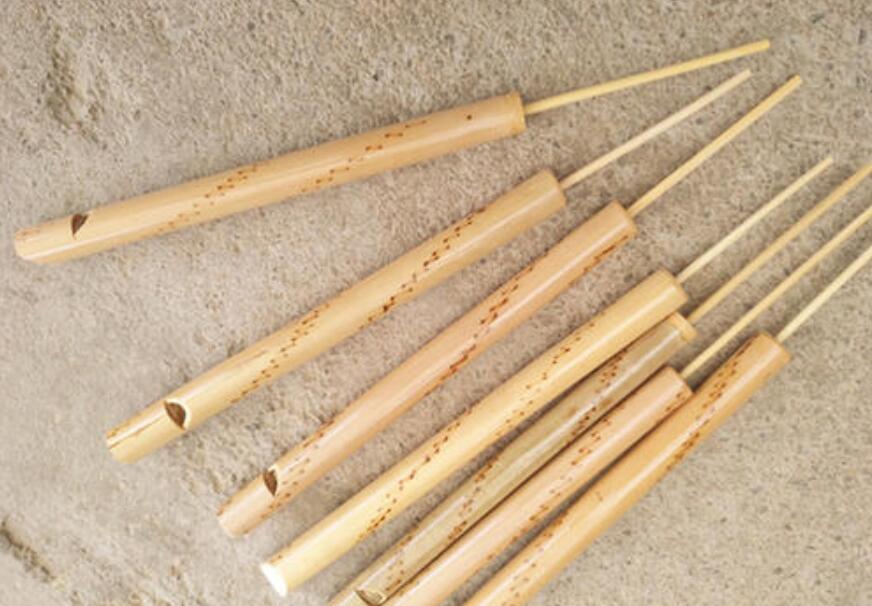

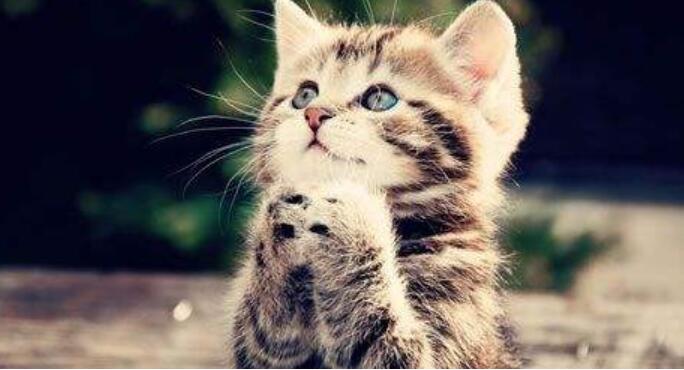
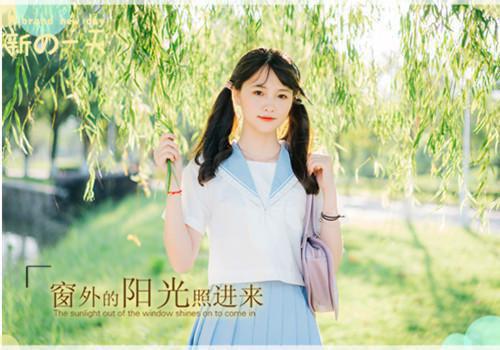
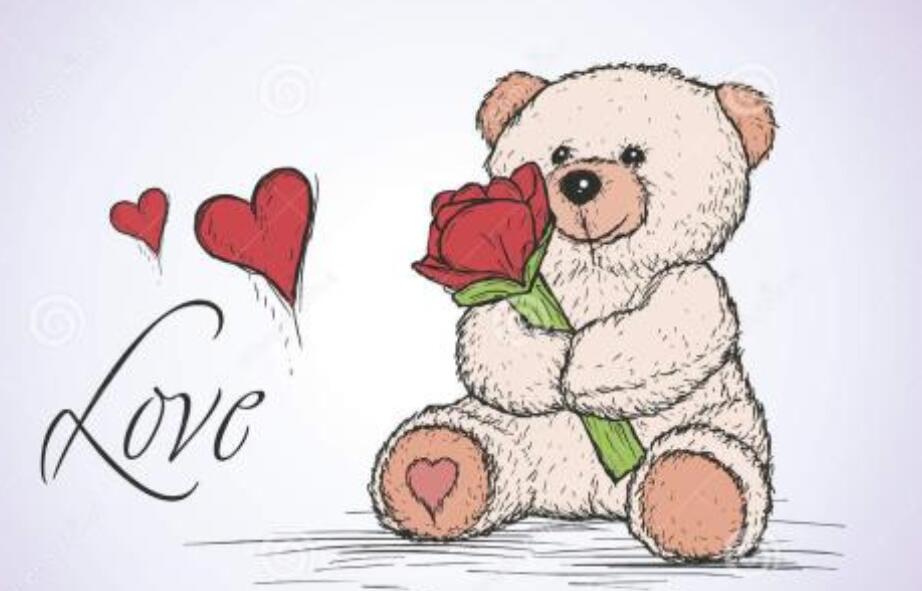
 老实人vip540
老实人vip540

